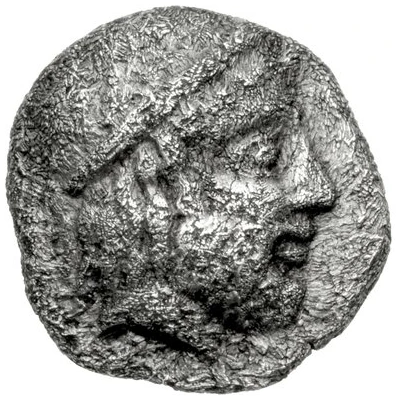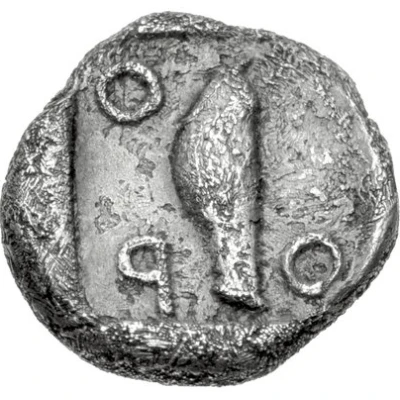


© Classical Numismatic Group, Inc.
Obol 440 BC - 430 BC
| Silver | 0.86 g | 9.0 mm |
| Issuer | Thronion (Lokris) |
|---|---|
| Type | Standard circulation coin |
| Years | 440 BC - 430 BC |
| Value | Obol (⅙) |
| Currency | Drachm |
| Composition | Silver |
| Weight | 0.86 g |
| Diameter | 9.0 mm |
| Shape | Round (irregular) |
| Technique | Hammered, Incuse |
| Demonetized | Yes |
| Updated | 2024-10-10 |
| Numista | N#151376 |
|---|---|
| Rarity index | 100% |
Reverse
Knemis (lower leg armor - greave)
and city abbreviation, read counter-clockwise
within shallow incuse square
Script: Greek
Lettering:
Θ P Ο
(retrograde P, a die making error)
Unabridged legend: Θρόνιον
Translation: Thronion
Interesting fact
The Obol coin from Thronion (Lokris) was used as a form of currency in ancient Greece, specifically in the city-state of Lokris, and it's interesting to note that the word "obol" is derived from the Greek word "obelos," which means "roasting spit" or "skewer." This coin was made of silver and weighed 0.86 grams, which was a significant amount for a coin at that time. Additionally, the Obol coin was used as a standard unit of exchange in ancient Greece, and it's fascinating to think about how it played a role in the economy of the time.